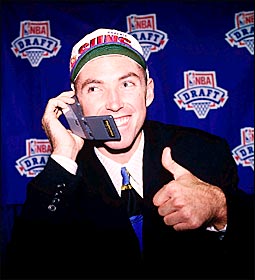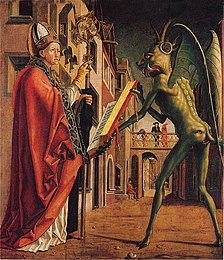David Epstein and Malcom Gladwell are having a bit of a debate. In his new (and excellent) book
The Sports Gene, Epstein takes strong issue with the idea that 10,000 hours of practice is a useful rule of thumb for how much practice it takes for someone to be world class.
The "10,000-hour rule" was popularized by the writer Malcolm Gladwell in a chapter with that title in his 2008 book
Outliers. In it Gladwell quotes approvingly neurologist Daniel Levitin (p. 40):
[T]en thousand hours of practice is required to achieve the level of mastery associated with being a world-class expert -- in anything. In study after study, of composers, basketball players, fiction writers, ice skaters, concert pianists, chess players, master criminals ... no one has yet found a case in which true world-class expertise was accomplished in less time.
For his part Epstein agrees that practice helps perfect, but finds the evidence to be far more nuanced and complex, arguing that "drastically different amounts of practice ... will be required for similar outcomes." Epstein adds, "somehow, the 7,000-to-40,000-hours rule just doesn't have the same ring to it" (p. 23).
Epstein explains further in
an interview with Outside magazine:
Outside: The popular narrative you found while researching the book was the 10,000-hour rule made famous by Malcolm Gladwell’s book Outliers. Was the idea that pervasive?
Epstein: Totally. And it motivated me to do the book, actually, and this was before I even knew how I felt about the so-called rule. . . people would call it “Gladwell’s 10,000 hours” as if he had done the research for it. It started to bug me. People were using it just to mean that practice was important, that’s it. That’s not what the theory says. The researcher behind it, Anders Ericsson, has said that he thinks all people have the necessary genes to be elite performers. Just saying that practice is important is totally uncontroversial. From a scientific standpoint it’s useless. Scientists have to say how important it is, what else is important? I found it to be troubling from a scientific standpoint and the more I evaluated it, the more it seemed to unravel. And ultimately, Ericsson read Outliers and said Gladwell misconstrued his work. His words, not mine.
Outside: How did Gladwell misconstrue it?
Aside from not having copied the numbers from the actual paper correctly for his book? He says that there is a perfect correspondence between practice and the level of expertise a person attains. And you can’t tell that from the paper. The 10,000 hours is an average of differences. You could have two people in any endeavor and one person took 0 hours and another took 20,000 hours, which is something like what happened with two high jumpers I discuss in the book. One guy put in 20,000 and one put in 0, so there’s your average of 10,000 hours, but that tells you nothing about an individual.
Now, Gladwell doesn’t say there’s no such thing as genetic talent. I think other writers are stricter than him. [Matthew Syed’s] Bounce is a book that minimizes talent. Gladwell does say elite performers are more talented. One of the things that Ericsson criticizes Gladwell about is to say that 10,000 hours is some kind of rule. The paper just says that these performers by the age of 20, these performers have accumulated 10,000 hours but there’s no where that says it’s a magical number where that’s when they become elite or anything like that.
[Epstein] cites a study by Guillermo Campitelli and Fernand Gobet of a hundred and four competitive chess players. Epstein says that they found that the average time it took to reach “master” status was eleven thousand hours—but that one player reached that level in just three thousand hours. This is variation on an extreme scale. Does that mean that in chess “naturals” really do exist? I’m not so sure. Epstein is talking about chess masters—the lowest of the four categories of recognized chess experts. (It’s Division II chess.) Grandmasters—the highest level—are a different story. Robert Howard, of the University of New South Wales, recently published a paper in which he surveyed a group of eight grandmasters and found that the group hit their highest ranking after fourteen thousand hours of practice. Even among prodigies who reached grandmaster level before the age of sixteen, we see the same pattern. Almost all of that group reached grandmaster level at fourteen or fifteen, and most started playing when they were four or five. The famous Polgár sisters (two of whom reached grandmaster status) put in somewhere north of fifty thousand hours of practice to reach the top. Epstein, similarly, argues that studies show that it takes only four thousand hours to reach “international levels” in basketball. The study in question was of a sample of players from the Australian men’s basketball team. I have nothing against either Australia or Australian basketball. But I’d be a bit more impressed if someone could find a starting point guard in the N.B.A. with fewer than ten years of basketball under his belt.
Gladwell might be interested in Steve Nash, long-time NBA veteran and wannabe soccer player. Nash
started playing basketball in 1988 while in 8th grade. Less than 9 years later
Nash started an NBA game at point guard for the Phoenix Suns. Would this case impress Gladwell?

The case of Steve Nash, and other NBA basketball stars with more or less experience simply reinforces Epstein's argument -- the answer to the question of whether talent or practice matters more is always: it depends. It depends on the task and on the individual. Sometimes the combination of task and individual means that less practice is needed to achieve world class expertise, some times more, and sometimes there is simply no combination that leads to world class expertise (e.g., me and long-distance running!).
One thing that we can say for sure from this debate -- There is no "10,000-hour rule." It is an oversimplification of a much more complex set of ideas.
The Sports Gene helps to put it in its proper place.








